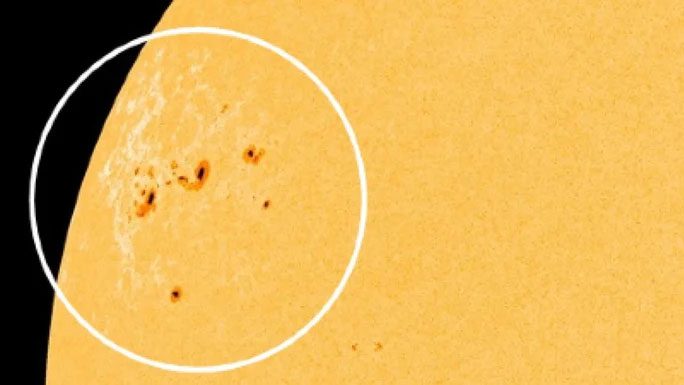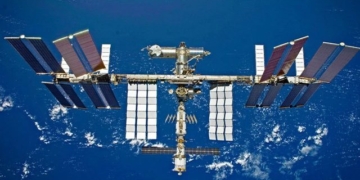This is a “cluster” of at least 6 groups of sunspots forming on the sun, our planet’s parent star.
According to Live Science, “the dark region” spans an area 15 times wider than the diameter of Earth, generating alarming solar storms (also known as geomagnetic storms). Earth is soon to enter a danger zone.
This is one of the largest and most crowded areas of sunspots, formed by at least 6 different clusters of sunspots.

Large clusters of sunspots are gradually “aiming” towards Earth, captured by NASA’s spacecraft – (Photo: SDO/NASA).
Sunspots are regions of magnetic chaos, creating “gun barrels” that shoot out high-energy projectiles, even massive plasma spheres known as coronal mass ejections (CMEs).
These gun barrels are continuously working together to shoot into space. The combined “firepower” of the entire cluster is strong enough to shake the surface of our parent star.
The first sunspot group named AR3490 was discovered “on the shoulder” of the sun on November 18, tilted towards the Northeast. Following this, another sunspot group AR3491 emerged.
While “aiming” to prepare for a direct hit on us, this sunspot group has generated an additional 4 new sunspot groups.
According to SpaceWeatherLive.com, this “dark region” has produced at least 16 class C solar flares and 3 class M flares in the past 4 days, with a very high potential for X-class flare eruptions.
This could also lead to a stronger form of bombardment in the form of CME fireballs filled with charged particles, which can cause intense geomagnetic storms for Earth.
Humans hardly feel geomagnetic storms, but our devices certainly do. Power grids, radio systems, and GPS… can be disrupted in some areas. This occurs due to magnetic chaos when energy projectiles or fireballs collide with magnetic field lines.
Meanwhile, auroras may spread across the sky, creating a stunning spectacle.


















































